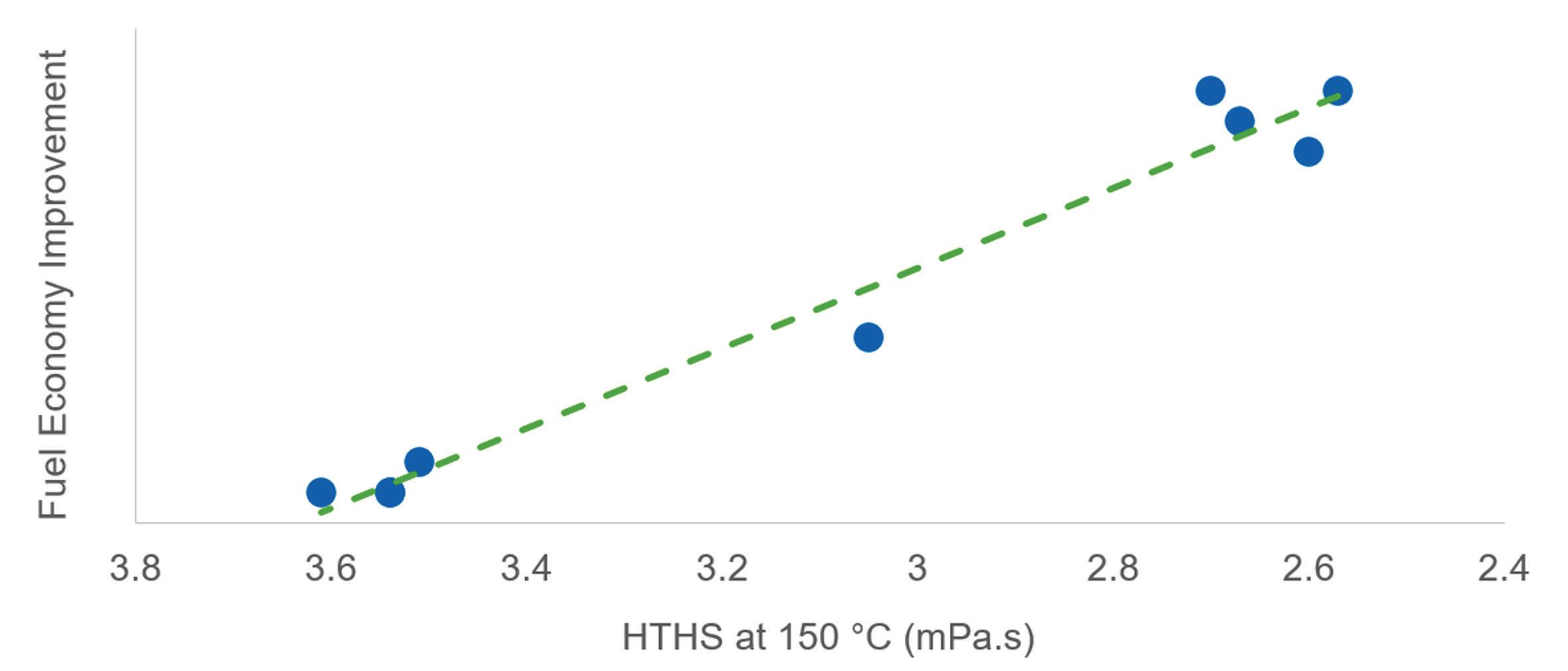“Fuel economy or false economy?”
Alan Henderson, Senior Marketing Specialist for Heavy Duty Engine Oils, and Dominic Myers, R&D Scientist for Heavy Duty Engine Oils, Afton ChemicalOriginal equipment manufacturers (OEMs) are increasingly looking at low HTHS (high temperature, high shear) heavy duty engine oils to help their latest commercial vehicle engine technology meet the fuel economy demands of EU emissions legislation. A pragmatic heavy duty engine oil formulation style is key to create resilient fluids, that deliver lasting benefits and at a cost that makes sense for the end user.
New EU legislation mandates a much faster reduction in CO2 emissions than has been achieved in recent years. From 2025, non-compliance with target CO2 emissions – which entails a 15% reduction from the 2019 baseline – will incur stiff financial penalties for every vehicle sold. Maintaining emissions at 2019 levels would result in a cost of around 40,000 Euros per vehicle sold. The new vehicle energy consumption calculation tool (VECTO) will be real-world validated with in-service conformity testing, so the pressure is now on OEMs to meet this target and ensure it continues to be met throughout each vehicle’s lifetime.
By 2030, emissions targets will become more challenging – a 30% reduction versus 2019 baseline. OEMs will require some proportion of their sales to utilise new technology – such as battery and/or fuel cell electrification or hybridisation – in order to meet the emissions target. The European Commission is also currently proposing going further – to as far as 45% reduction by 2030. Until then, in tandem
with advances in vehicle aerodynamics, combustion efficiency and renewable fuels, heavy duty engine oils and additives have a significant role to play in helping OEMs improve fuel economy through powertrain efficiency.

Numerous heavy duty engine oil levers have been looked at, but which ones actually deliver?
Viscosity is frequently quoted as a lever, but there is more than one type of viscosity. Kinematic viscosity is more relevant for those seconds or minutes from a cold start until an engine reaches its operating temperature and has less relevance to the overall operating efficiency of a commercial vehicle. It is more useful as an indicator of low temperature wear protection because oil must be able to flow around the engine on start-up, especially during cold weather, to minimise the contact between moving surfaces.
Dynamic viscosity, on the other hand, is independent of fluid density and has a significant influence on overall fuel economy. One dynamic viscosity measure
is HTHS and measures how easily molecules within the fluid slide past each other under the HTHS conditions of a warm, working engine. Lower HTHS viscosity heavy duty engine oils lose less energy when shearing under these conditions and data demonstrates that HTHS is strongly correlated with fuel economy.

and also helps to reduce potential issues with base oil availability. Solubility and compatibility issues could also arise with the inclusion of PAO, necessitating the need for more expensive componentry, which could also drive up the cost of the SAE 0W-20 finished fluid. On a practical note, low HTHS SAE 5W-20 heavy duty engine oils may also be more likely to be used beyond the vehicle’s warranty period, to retain the proven fuel economy and drain interval benefits that will offset the higher cost of the engine oil. By contrast, the incremental fuel economy benefits of a similar HTHS SAE 0W-20 formulation may not outweigh its additional cost.

To support new hardware designs, OEMs are recommending heavy duty engine oils with lower HTHS viscosity – typically 2.6 mPa.s – but some are looking even lower. An HTHS of 2.6 mPa.s can be achieved with different viscosity grades: either a SAE 5W-20 or a SAE 0W-20. The difference in fuel economy performance between these two grades will not be evident in operation, as they present the same HTHS with the impact at low temperature at cold engine start being a fraction of operating time.
Friction modifier additives have been hailed as a potential solution to reduce fuel consumption, and minimising energy lost through friction would indeed be expected to improve engine efficiency. However, friction modifiers can get consumed quite quickly over time and only show any clear benefit in fresh oil performance. With a greater focus on real driving emissions, it is important to formulate a resilient heavy duty engine oil with performance that does not diminish before the next planned oil change.
Afton’s research with Commercial Fleet Managers consistently shows the importance of cost-optimisation and efficiency being a key focus to drive down total cost of ownership. As they work with small margins, fleet managers are reliant on additive companies and oil marketers to drive heavy duty engine oil formulation in a pragmatic way. The pressure on OEMs to meet 2025 targets could see HTHS viscosity moving even lower, but that does not have to mean ever-lower kinematic viscosity grades and the challenges these bring for engine wear and total cost of ownership.
The optimal solution for an end user will depend on a number of factors.

Firstly, SAE 0W-20 heavy duty engine oils are usually more costly than SAE 5W-20 oils as they usually require a higher polymer content and the inclusion of PAO or Group III+ basestocks to aid their low temperature flow properties. By contrast, a SAE 5W-20 oil can be formulated with less viscosity modifier and using only Group III basestocks, which keeps heavy duty engine oil formulation costs down
Is moving to a SAE 0W-20 low HTHS fluid good for fuel economy, or a false economy? Afton Chemical believes that the most efficient solution is a SAE 5W-20 low HTHS fluid, delivering credible fuel economy benefits without compromising engine durability, supporting longer OEM-recommended drain intervals, and striking the right balance between heavy duty engine oil performance and cost. www.aftonchemical.com
Figure 1: Afton data demonstrates a linear relationship between fuel economy improvement and HTHS viscosity.